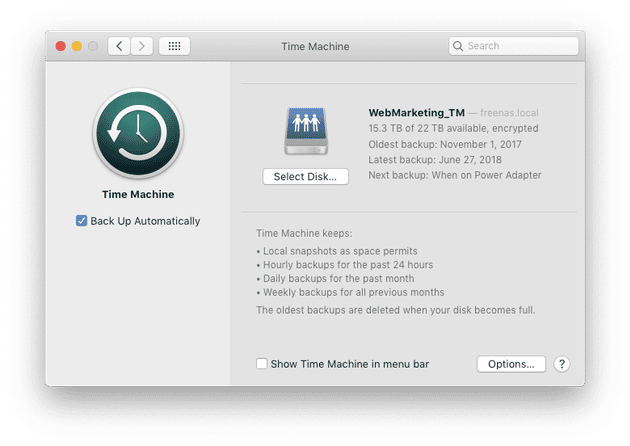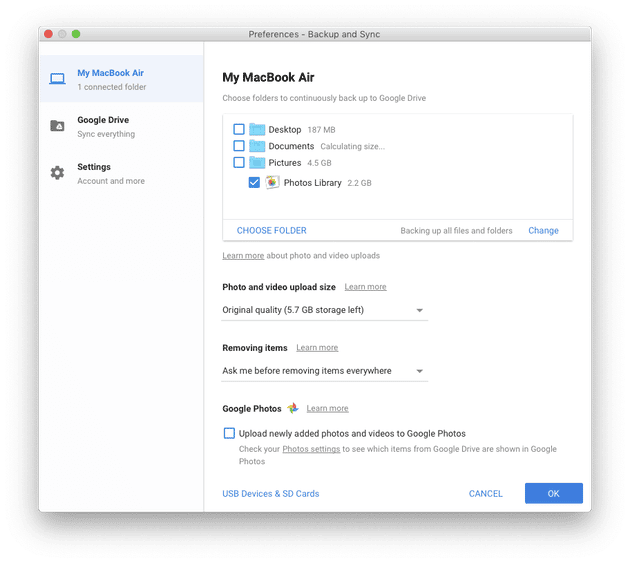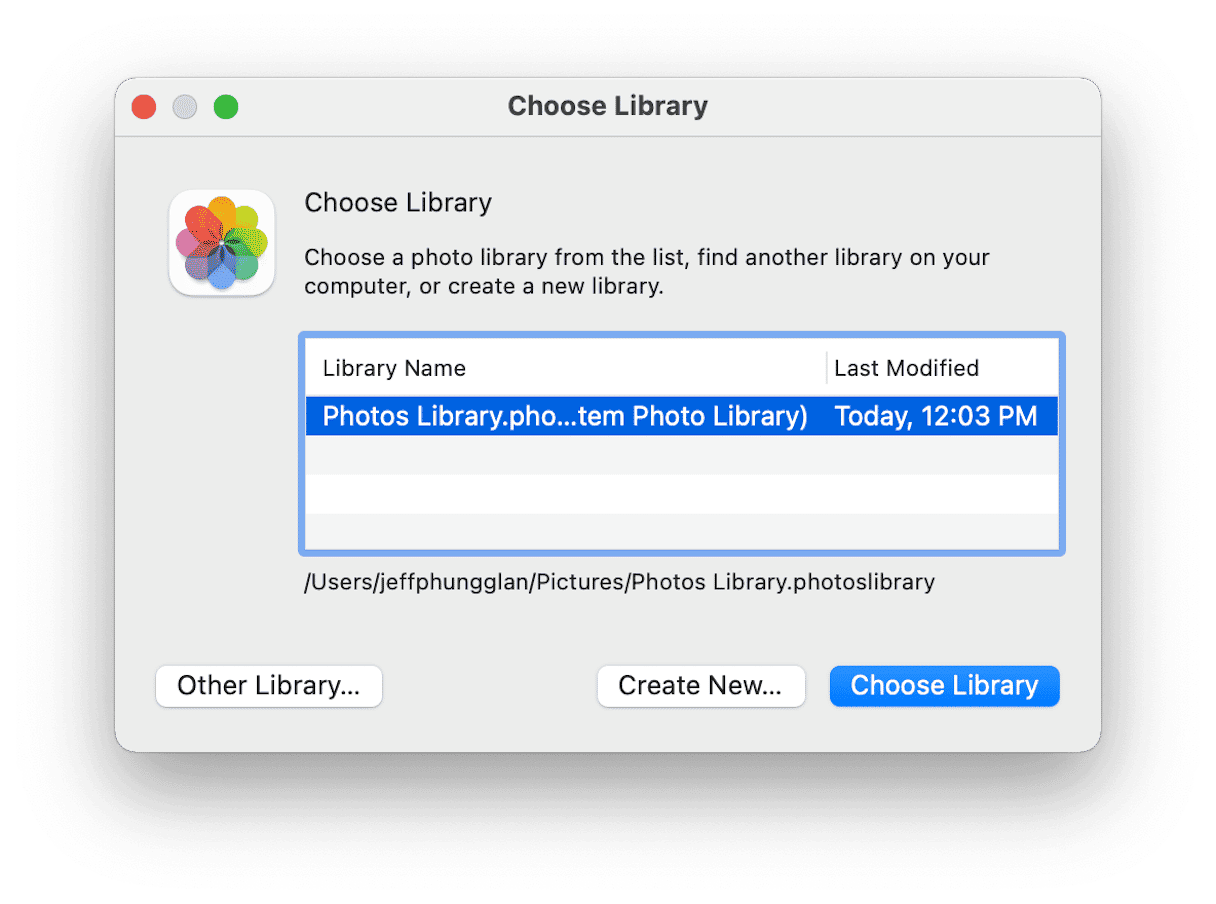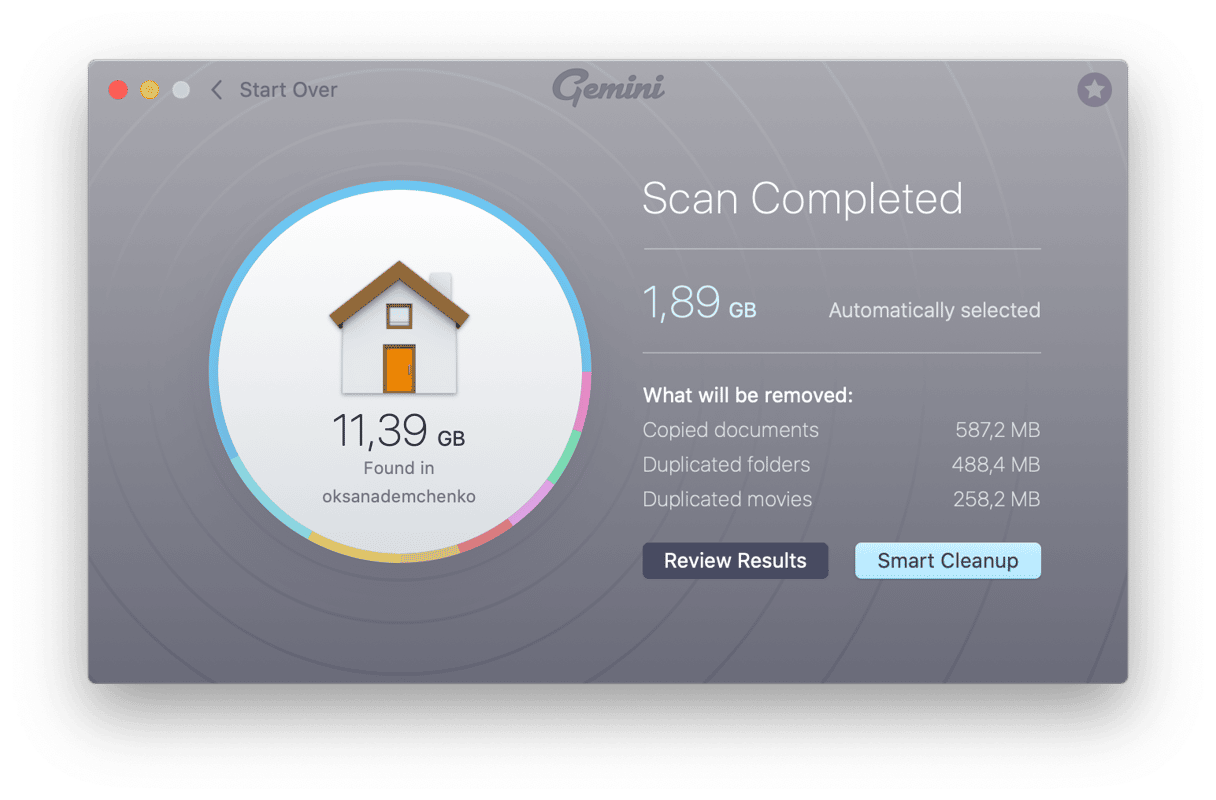Have you ever had trouble finding a photo and feared the worst — that you accidentally deleted it? Or maybe you’ve heard a friend bemoan of how their hard drive failed and they lost everything from pictures of their firstborn to that once-in-a-lifetime selfie with Michael Jordan?
After taking a moment to realize how fortunate you’ve been to have not lost any pics yourself, you probably think, “I should start backing up my photos.” Well, you’ve found the right article. We’re going to go through a few solutions for backing up your Mac and, more specifically, your photo collection. Because while losing an important piece of work is tragic, it’s usually replaceable. The moments that your pictures represent are fleeting, and there’s no way to recreate them.
Best ways to back up your photos on Mac
As mentioned earlier, there are a couple ways to go about backing up your photos. The ones we’re going to go over are:
- iCloud
- Time Machine
- Google Photos
- External hard drive
After reading this article, you’ll be able to weigh out the cost versus convenience for each of these options and see which one works best for you. At the end of the day, the best way to backup photos is the one that’s easy for you to use on a regular basis.
1. How to backup photos to iCloud
The first method is the one that comes standard with your Mac and doesn’t require you to install any additional software. iCloud is cloud-based storage made by Apple and available to anyone with an AppleID. Using iCloud to backup photos is easy thanks to automatic backups and syncing, built into both iPhone and Mac. All you have to do is make sure iCloud is turned on on each device, and you’re all set.
The catch, as there always is, is that you only get 5 GB for free. And that includes not only photos, but also anything else you decide to store on your iCloud drive. Additional storage can be purchased and is fairly affordable compared to other cloud storages.
Setup iCloud Photos backup
When you backup your photos to iCloud, not only does it save your pictures to the cloud, but it also saves them on all of your devices. Since we’re talking mainly about your Mac in this article, you can follow the steps below to see how to save iCloud Photos to your Mac running macOS Mojave or earlier:
- Go to System Preferences > iCloud.
- Click Options next to Photos.
- Select iCloud Photos.

After you turn on iCloud Photos, you’ll get access to other options for syncing and sharing your photos.
If your Mac is running macOS Catalina or higher, follow these steps:
- Click the Apple logo > System Preferences > Apple ID > iCloud.
- Check the box next to Photos.
iCloud: Summary
iCloud is designed to backup your photos from any Apple product. Most of the time it works seamlessly and everything happens in the background. So, once you set it up, you can pretty much forget about it.
The major downside of iCloud is that you only get 5 GB free and you’re guaranteed to fill that up pretty quickly. But, the subscription tiers are reasonable and you could end up paying less than $3/month to back up your photos.
2. How to backup photos to Time Machine
The next type of backup veers away from the cloud-based model. Time Machine is the built-in Mac application that will automatically backup your Mac to an external hard drive. Which means you will have to buy an external drive or use a network drive, but the bright side is as long as you have the hard drive plugged in your Mac will be backed up.
One of the major benefits to Time Machine is that it’s a differential backup. That means that after the initial backup it will only back up the files that are new and/or changed. So every backup after the first one will be faster because, in theory, it’s backing up fewer files.
Does Time Machine back up my photo library?
There can be some confusion as to what Time Machine backs up once it’s configured. Simply put, it backs up everything, including any photos stored on your Mac.
That being said the easiest way to search for photos and/or restore things from your backup is to ensure you’re using the Photos app on your computer. If you just have random photos scattered throughout your Mac it can be harder to track those down, whereas Photos helps you keep your library organized.
Setup Time Machine backup
Because Time Machine backs up everything on your computer, any duplicates you have taking up space on your computer’s hard drive will also waste space in your backup. The Mac app, Gemini 2, can scan your hard drive to help you quickly find and remove duplicate files.
Once you plug an external hard drive into your Mac, a pop-up should appear asking you to set up Time Machine. All you need to do is click the button, Use as Backup Disk, then you’ll be ready to go. Pretty easy, right? Well in the event you don’t see that pop-up, don’t worry. You can set up Time Machine manually by following these instructions:
- Go to Apple > System Preferences > Time Machine.
- Click Select Disk.
- In the Time Machine preferences window, select your external drive from the list of available disks.
- Then click Use Disk.

If the hard drive is not formatted properly to be used with Time Machine, you’ll be prompted to format it. You’ll also notice an option to encrypt the hard drive and your backup, which adds an extra level of security in case you misplace the external drive.
Time Machine: Summary
Since Time Machine is a native macOS feature, it’s really simple to set up and use. In fact, after you set it up there’s not much left for you to do. As long as your Time Machine drive is connected to your Mac, it will keep backing up.
The drawbacks of using Time Machine are it requires a significant investment upfront, whether you’re buying an external hard drive or a wireless backup system. And obviously, it has to be connected to the drive. That means if you’re traveling, you’ll need to take your external hard drive with you. Or, wait until you get home to back up again.
3. How to backup photos to Google Photos
The next option is another cloud-based backup solution, Google Photos. While not as well-integrated into iPhone and Mac as iCloud, Google Photos offers equally easy setup and ongoing backups.
The biggest difference between Google Photos and iCloud though is that with Google Photos you get 15 GB of storage for free. While that’s still a relatively small amount of space, it at least gives you more room to play. Especially, if you’re not sure which method you want to use and just want to play with all of them for a little bit. Like iCloud, you can purchase additional storage for a monthly fee and it’s not an enormous amount either.
Setup Google Photos to backup pictures
Like iCloud, Google handles backups on a per-device basis, but in this case we’ll be covering how to set up a Google Photos backup on Mac:
- Download and install the Google Backup and Sync app on your Mac
- Sign in with your Google Account
- Select whether to back up only photos or videos or all files
- Select all folders you want to back up
- Under “Photo & video upload size,” select your upload quality
- Click Start

Google Photos: Summary
Very similar to iCloud, in regard to ease of use and reliability. It backups pictures from both your Mac and iPhone without you having to do much after you set it up. And while Google does give you the most free space out of any of the cloud services, 15 GB is not a ton. If you continue to use Google Photos, be prepared to pay for more storage.
4. Backup photos to an External hard drive
This next option will definitely take the most manual labor. On the other hand, using an external hard drive will give you the most control over what you’re backing up, and many prefer to have it the old-fashioned way. Whether you’re using Photos, another photo manager, or just have pictures scattered around your Mac, you’ll be able to back them up. It’ll just take you a little bit of time to do it yourself.
Of course, if you have iCloud turned on your Mac, you can also backup your iCloud photos to an external hard drive as a secondary back up.
How to back up Photos Library to an external hard drive
- Open Finder > Pictures (or wherever your images are)
- Select your Photos Library, the folder you want to back up, or individual files
- Drag and drop the file onto your external hard drive in the left column.
While this method gives you the most freedom and assurance that you’re backing up exactly what you want, if you make any changes to your Photo Library on Mac, you’ll have to back it up all over again.
External Hard Drive: Summary
Manually backing up your pictures to an external hard drive is pretty tedious. You still have to buy an external drive, remember to back it up periodically, and there’s a greater chance for wasting space by saving duplicate pictures.
There’s not really much of an upside to this, especially when Time Machine is available to do all the heavy lifting for you.
5. How to use Dropbox to backup photos
Since Dropbox is designed to backup your entire Mac, it’s a great solution for your pictures as well. The downside is that it’s not designed specifically as a photo backup. So, it’ll take a little bit of manual configuration to get it set up. But, I promise, it’s nothing too difficult.
Setting up Dropbox as a photo backup
Dropbox lets you backup specific folders on your Mac, but it doesn’t give you the option for your Pictures folder. That means you’ll need to save your pics in a folder either on your Desktop or Documents folder. Annoying, but not the end of the world.
Then, you need to download the Dropbox app on your Mac. Once you have that installed and opened, just follow these steps:
- Sign in with your Dropbox account.
- Click on your initials or avatar > Preferences.
- Go to the Backup tab.
- Under This Mac, click Set up.
- Then, click Add Folders and select the folder with your pictures.

Dropbox: Summary
Using Dropbox is great, especially if you’re already using it for other things. You get all the benefits of “the cloud” with Dropbox, but without any of the picture-specific features that Google Photos or iCloud offer. That’s why it’d be hard to justify setting up a Dropbox account just to back up your photos. There are a couple of other easier options on this list that are designed specifically for pictures.
6. How to backup photos with OneDrive
Another cloud-based option for your pictures is Microsoft’s OneDrive. And it’s a great option if you’re already using it for work and have the space to backup your pictures. The downside is that you can’t specify specific folders to sync. You can only sync the OneDrive folder it creates on your Mac.
How to set up OneDrive to backup pictures
After you download the OneDrive app, you’ll need to move your Photos library to the OneDrive folder and then tell Photos where the library now lives. And here’s how to do all of that:
- Sign in with your Microsoft account.
- Find your OneDrive folder on your Mac.
- In a new Finder window, go to your Pictures folder.
- Then, drag and drop your Photos library file into your OneDrive folder.
- Now hold down the Option key and open the Photos app.
- Click Other Library.
- Navigate to your OneDrive folder and select your Photos library in there.
- Finally, click Choose Library.

OneDrive: Summary
Again, OneDrive is a great cloud solution for your pictures if you’re already using it for work. It does have a few photo features that are helpful. But at the end of the day, OneDrive is primarily designed to sync your Microsoft Office files and that’s where you’re going to find it the most useful. The fact that you can use it for your pictures is just an added bonus.
Now that you’ve got some idea on how to back up your photos, it’s time to get started. The most important thing to keep in mind is that a backup is only as good as the last time it was done. So back up your pictures early, and back them up often. And if you’re truly worried about it — why only have just one photo backup? Combine a cloud-based option with an external HDD and sleep well knowing your memories are safe.







